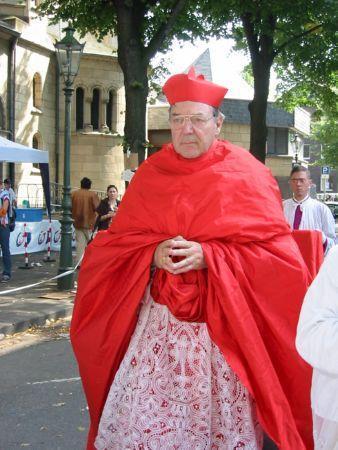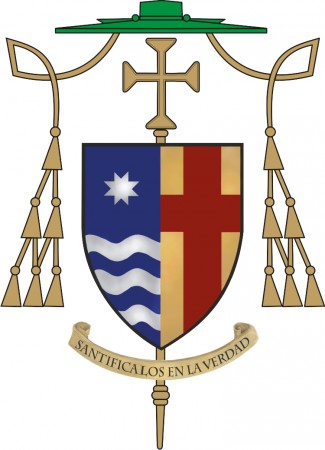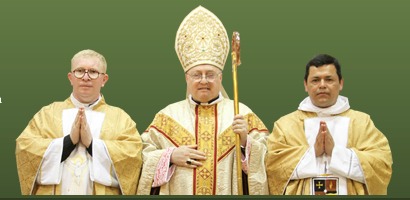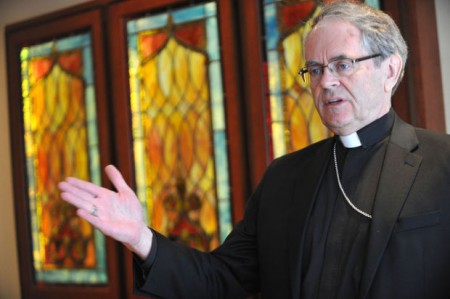At a United Nations hearing the Vatican tries to turn the moral question of whether child abuse is torture into a legal debate about jurisdictions.
By Barbie Latza Nadeau
This may come as a huge surprise to many Catholics, but the Holy See is claiming it doesn’t really bear legal responsibility for how they or even their priests behave. Too good to be true? Actually, too horrible to be believed. What the Vatican is claiming this week before a United Nations panel is that, really, the question of priests sexually abusing little kids is a matter for local law enforcement. And, no, the physical pain and mental anguish inflicted on children by pedophile prelates should not be called “torture,” at least as defined by the U.N.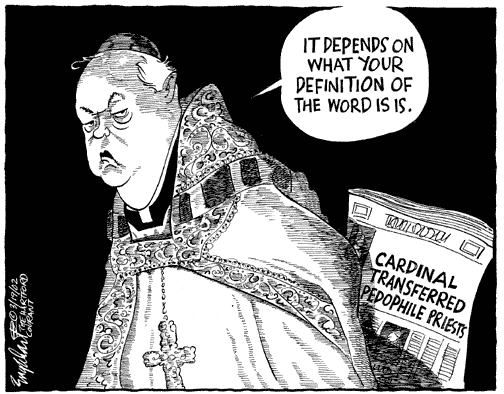
When the Vatican’s U.N. ambassador appeared in front of the U.N.’s Convention Against Torture in Geneva on Monday, the issues were about jurisdiction, not spiritual guidance and the Roman Catholic Church’s moral responsibility for errant clerics. “It should be stressed, particularly in light of much confusion, that the Holy See has no jurisdiction over every member of the Catholic Church,” said Archbishop Silvano Tomasi, who represented the Vatican as a signatory of the convention on torture.
In his opening remarks, released in advance to the press, Tomasi went on to say, “The Holy See wishes to reiterate that the persons who live in a particular country are under the jurisdiction of the legitimate authorities of that country and are thus subject to the domestic law and the consequences contained therein. State authorities are obligated to protect, and when necessary, prosecute persons under their jurisdiction.”
“Not our problem” and “they don’t work for us” may have become the boilerplate answers on the issue of who is ultimately responsible for priestly child abuse. But, curiously, when it comes to nearly every other subject, from doctrinal issues like preaching against birth control and for sexual abstinence, to how those spreading the Catholic message behave, including nuns “pushing feminist themes,” the Catholic Church at least seems to want total jurisdiction over its flocks and its shepherds.
As for those state authorities the Vatican says are “obligated to protect,” the Vatican hierarchy has, for years, done everything it can to prohibit them from doing just that by refusing to turn over documents on pedophile priests, or, in some cases, threatening the victims who dare to speak.
In an open letter ahead of Monday’s meeting in Geneva, Barbara Blaine, head of the Survivors Network of Those Abused By Priests, known as SNAP, asked the U.N. committee members to remember that the Vatican is still covering up sex abuse.
In Rome, the pope’s spokesman, Father Federico Lombardi, shrugged off the meeting entirely, telling reporters that the topic of child abuse has no place in a discussion of torture.
“First, we humbly ask that you keep in mind that we are convinced that hundreds of innocent children and vulnerable adults are being sexually violated, tortured and assaulted—right now, today—by Catholic clerics,” Blaine wrote. “Second, we ask that you keep in mind that torture and violence can be subtle and manipulative. Or it can be blatant and brutal. Either way, it’s horribly destructive to the human spirit, especially when inflicted on the young by the powerful, on the truly devout by the allegedly holy.”
The Vatican’s required appearance in front of the Convention on Torture is the second time this year it has been called on the carpet for how Rome guides the Church’s many dioceses across the world. In January, Vatican officials also sat in front of the United Nations’ Convention for the Rights of the Child to defend their inexcusable record on child abuse. Then, the U.N. group scolded the Vatican:
“The Committee is gravely concerned that the Holy See has not acknowledged the extent of the crimes committed, has not taken the necessary measures to address cases of child sexual abuse and protect children, and has adopted policies and practices which have led to the continuation of the abuse by and the impunity of the perpetrators,” that U.N. panel concluded.
Back then, as on Monday, Tomasi toed the party line, pleading that the Church in Rome could not possibly take responsibility for what its priests do in the field. “Priests are not functionaries of the Vatican,” Tomasi told the committee in January. “Priests are citizens of their own states, and they fall under the jurisdiction of their own country.”
This time, the Vatican envoy went one step further, arguing that since the Convention on Torture document only applies in a juridical sense to the confines of the tiny Vatican city-state, the members of the convention might consider what a great job the Vatican actually does getting the anti-torture message out around the world.
“It might be said that the measures employed by the Holy See to take effective legislative, administrative, judicial or other measures to prevent and to prohibit torture and to address its root causes to avoid future acts in this area are abundant,” Tomasi said. “This manifests the Holy See’s desire to lend its moral support and collaboration to the international community, so as to contribute to the elimination of recourse to torture, which is inadmissible and inhuman.”
In Rome, the pope’s spokesman, Father Federico Lombardi, shrugged off the meeting entirely, telling reporters that the topic of child abuse has no place in a discussion of torture.
“A contributory factor is often the pressure exercised over the [U.N.] committees and public opinion by [nongovernmental organizations] with a strong ideological character and orientation, to bring the issue of the sexual abuse of minors into the discussion on torture, a matter which relates instead to the Convention on the rights of the child,” Father Lombardi said. “The extent to which this is instrumental and forced is clear to any unbiased observer.”
Monday’s meeting follows the first official meeting of Pope Francis’s special commission on child abuse, whose members gathered over the weekend in Rome. They set out their initial plan for drawing up statutes and arranged to meet again soon to help define just what they will do.
“In time, we will propose initiatives to encourage local responsibility around the world and the mutual sharing of ‘best practices’ for the protection of all minors, including programs for training, education, formation, and responses to abuse,” they said in a statement after the inaugural meeting.
On Tuesday, Tomasi faces further questioning on the Vatican’s stance on abuse. If the committee does rule that pedophiliac child abuse is torture, and that the Vatican is responsible, one might expect a rush of lawsuits citing the United Nations’ ruling, or even sanctions or expulsion from the committee.
For the victims of priestly abuse, even that won’t be enough. “For most of us, enduring the torture, rape and sexual violence was almost unbearable,” Blaine said ahead of Monday’s meeting. “But the betrayal by Church officials was just as damaging and, for many, even worse than that of the sexual violence. Those in positions of trust—who we were taught were closest to God and revered above anyone else, including respected teachers, community leaders, politicians, physicians and even our parents—treat us as enemies when we muster enough courage to report the rape and sexual violence we have endured.
“Rather than being embraced, appreciated and acknowledged, we are ostracized, ignored and blamed,” said Blaine. “This adds additional torture to far too many.”
Complete Article HERE!


